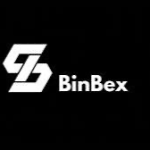Hey there, fellow trader! Are you ready to dive into the how to trade in bank nifty? Buckle up because we’re about to embark on an exciting journey together—one that’s packed with opportunities and potential profits.
Now, before we jump headfirst into the nitty-gritty, let’s take a moment to understand what Bank Nifty is all about and why it’s got everyone buzzing. Think of Bank Nifty as the heartbeat of the Indian stock market—it’s the index that tracks the performance of the top banking stocks listed on the National Stock Exchange of India (NSE). We’re talking about the heavy hitters here, the big-name banks that drive the economy and shape market sentiment.
But why all the hype around Bank Nifty? Well, for starters, it’s incredibly responsive to market trends. Since the banking sector is so closely tied to the overall health of the economy, changes in Bank Nifty can give us valuable insights into where the market might be headed next. And as traders, that’s music to our ears because it means we can spot opportunities to ride the waves and make some serious gains.
So, what’s in store for you in this guide? Think of it as your roadmap to Bank Nifty mastery. We’re going to walk you through everything you need to know to get started, from the basics of trading to advanced strategies for maximizing your profits. Whether you’re a newbie looking to dip your toes into the world of trading or a seasoned pro ready to take your skills to the next level, we’ve got you covered.
So, grab your favorite trading mug, get comfy, and let’s dive into the wild and wonderful world of Bank Nifty trading together. It’s going to be one heck of a ride, and I’m thrilled to have you along for it!
Understanding Bank Nifty

What is Bank Nifty?
Hey there, let’s start by unraveling the mystery behind Bank Nifty. Think of it as the pulse of the Indian banking sector, a vital benchmark index that gives us a snapshot of how the top banking stocks are performing on the National Stock Exchange of India (NSE). But what exactly does that mean?
Well, imagine a basket filled with the heavyweight champions of the banking world—those big-name banks that dominate the market. Bank Nifty is essentially a collection of these elite players, carefully selected to represent the cream of the crop in the banking sector. When you hear people talking about Bank Nifty, they’re referring to this index—a powerful tool for gauging the health and performance of the banking industry as a whole.
Historical Performance of Bank Nifty:
Now, let’s rewind the clock and take a stroll down memory lane. Over the years, Bank Nifty has proven to be a reliable barometer of market sentiment, reflecting the ebbs and flows of the broader market trends. Its performance is like a mirror, reflecting the highs and lows of the banking sector and offering valuable insights into investor behavior.
Take a look at the historical data, and you’ll see that Bank Nifty has weathered its fair share of storms, riding the waves of market volatility with resilience. But here’s the beauty of it—all those ups and downs present opportunities for savvy traders like yourself to capitalize on market movements and turn a profit.
| Year | Bank Nifty Performance | Highlights |
| 2017 | +28.71% | Bank Nifty saw robust growth, buoyed by positive economic indicators and government reforms such as demonetization and the implementation of the Goods and Services Tax (GST). |
| 2018 | -16.86% | The banking sector faced headwinds due to concerns over non-performing assets (NPAs) and liquidity issues, leading to a sharp decline in Bank Nifty. |
| 2019 | +24.12% | Bank Nifty rebounded strongly, supported by easing liquidity concerns and expectations of economic revival. |
| 2020 | -26.87% | The COVID-19 pandemic wreaked havoc on global markets, causing Bank Nifty to plummet as investors panicked and sought safe-haven assets. |
| 2021 | +38.62% | Bank Nifty staged a remarkable recovery, fueled by massive liquidity injections, fiscal stimulus measures, and optimism surrounding vaccine distribution. |
| 2022 | +12.45% | Bank Nifty continued its upward trajectory, albeit with more moderate gains, as economic recovery gathered pace and corporate earnings improved. |
| 2023 | +20.89% | Bank Nifty maintained its positive momentum, driven by strong corporate earnings, supportive monetary policies, and renewed investor confidence in the banking sector. |
Factors Influencing Bank Nifty Movements:
Now, let’s talk about what makes Bank Nifty tick. You see, its movements aren’t just random—they’re influenced by a myriad of factors, both at home and abroad. From economic indicators and monetary policies to global market trends, there’s a whole host of variables at play.
Picture this: when the economy is booming, interest rates are low, and consumer confidence is high, Bank Nifty tends to soar. But throw in a curveball like a sudden shift in monetary policy or geopolitical tension overseas, and you might see it take a tumble.
So, why does this matter? Understanding the factors that drive Bank Nifty movements is key to navigating the market with confidence. By staying informed and keeping a close eye on these influences, you’ll be better equipped to make informed trading decisions and stay ahead of the curve.
So, there you have it—a crash course in understanding Bank Nifty. From its composition and historical performance to the factors that influence its movements, you now have the tools you need to navigate the world of Bank Nifty trading like a pro.
Getting Started with How to trade in Bank Nifty

So, you’re ready to dip your toes into the exciting world of Bank Nifty trading? Fantastic! Let’s get you set up and ready to go.
Setting up a Trading Account:
First things first, you’ll need a trading account to start trading in Bank Nifty. Think of it as your gateway to the stock market—a digital platform where you can buy and sell securities. Opening a trading account is relatively straightforward and can be done online or through a brokerage firm.
Here’s a quick rundown of the steps involved:
- Research: Take some time to research different brokerage firms and compare their offerings. Look for one that’s reputable, reliable, and offers competitive pricing.
- Documentation: Once you’ve chosen a brokerage firm, you’ll need to fill out some paperwork and provide documentation to verify your identity.
- Fund Your Account: After your account is set up, you’ll need to fund it with money to start trading. Most brokerage firms offer multiple funding options, including bank transfers and online payment platforms.
Demat Account Essentials:
Now, let’s talk about the importance of having a Demat account for trading in Bank Nifty. A Demat account is like a digital locker for your securities—it holds all the stocks, bonds, and other financial assets you own in electronic form. Without a Demat account, you won’t be able to trade in Bank Nifty or any other securities listed on the stock exchange.
Here’s what you need to know about opening a Demat account:
- Choose a Depository Participant (DP): A DP is a financial institution that acts as an intermediary between you and the depository (NSDL or CDSL). You’ll need to select a DP to open your Demat account.
- Submit Documents: Just like with a trading account, you’ll need to provide documentation to verify your identity and address when opening a Demat account.
- Activation: Once your account is opened and verified, it will be activated, and you’ll receive your Demat account number, which you’ll need for trading.
Choosing the Right Trading Platform:
Last but not least, let’s talk about selecting the right trading platform for Bank Nifty trading. With so many options out there, it can be overwhelming to choose the best one for your needs. Here are a few things to consider:
- Fees: Look for a trading platform that offers competitive pricing with low brokerage fees and no hidden charges.
- Usability: The platform should be user-friendly and intuitive, with features that make it easy to place trades, analyze charts, and manage your portfolio.
- Features: Consider what features are important to you, whether it’s real-time market data, advanced charting tools, or access to research reports.
Some popular trading platforms for Bank Nifty trading include Zerodha, Upstox, and Angel Broking, but be sure to do your own research to find the one that’s right for you.
5 Best Trading Platform for Bank Nifty
Here are five popular trading platforms suggestion and their minimum deposit amount that are well-suited for trading Bank Nifty
So, there you have it—everything you need to know to get started with Bank Nifty trading. From setting up your trading account and Demat account to choosing the right trading platform, you’re now equipped with the knowledge to take your first steps into the exciting world of stock market trading. Happy trading!
Fundamentals of Bank Nifty Trading

Welcome to the heart of Bank Nifty trading—the fundamentals. In this section, we’ll cover everything you need to know to lay a solid foundation for your trading journey.
Market Hours and Trading Timings:
First things first, let’s talk about timing. The Indian stock market operates within specific hours, and it’s essential to know when Bank Nifty derivatives are traded. Typically, Bank Nifty futures and options contracts are traded on the National Stock Exchange of India (NSE) during regular market hours, which are from 9:15 AM to 3:30 PM Indian Standard Time (IST), Monday through Friday.
But here’s the kicker—there’s also an extended trading session known as the “pre-market” session, which runs from 9:00 AM to 9:15 AM IST. During this time, you can place orders, but they won’t be executed until the regular market opens at 9:15 AM IST.
So, when’s the best time to trade Bank Nifty derivatives? It largely depends on your trading strategy and personal preferences. Some traders prefer to trade during peak market hours when there’s high liquidity and price movements are more pronounced, while others may find opportunities during quieter periods. Experiment with different times and see what works best for you.
Basics of Derivatives Trading:
Now, let’s dive into the world of derivatives—the bread and butter of Bank Nifty trading. Derivatives are financial instruments whose value is derived from an underlying asset, such as stocks, indices, or commodities. When it comes to Bank Nifty, the two primary types of derivatives you’ll encounter are futures and options contracts.
Futures Contracts: A futures contract is an agreement to buy or sell an asset at a specified price on a predetermined date in the future. Bank Nifty futures contracts allow traders to speculate on the future price movements of the Bank Nifty index.
Options Contracts: Options give traders the right, but not the obligation, to buy (call option) or sell (put option) an asset at a predetermined price within a specified period. Bank Nifty options contracts provide traders with flexibility and risk management opportunities.
Understanding the terminology and key concepts associated with derivatives trading is crucial for success. Familiarize yourself with terms like strike price, expiry date, premium, and intrinsic value to navigate the derivatives market confidently.
Risk Management Strategies:
Last but certainly not least, let’s talk about risk management—the cornerstone of successful trading. No matter how skilled you are, trading involves inherent risks, and it’s essential to have strategies in place to protect your capital.
Stop-loss Orders: A stop-loss order is a predetermined price at which you’ll exit a trade to limit your losses. By setting stop-loss orders, you can minimize potential losses and protect your capital from significant downturns in the market.
Position Sizing: Position sizing refers to determining the appropriate amount of capital to invest in each trade based on your risk tolerance and the size of your trading account. By properly sizing your positions, you can avoid overexposure to risk and preserve your capital over the long term.
Remember, risk management isn’t about avoiding losses altogether—it’s about managing them effectively to ensure your trading career can withstand the inevitable ups and downs of the market.
So, there you have it—the fundamentals of Bank Nifty trading. From understanding market hours and derivatives basics to implementing risk management strategies, you’re now equipped with the knowledge to start trading with confidence. Happy trading!
Let’s see a table that demonstrates different lot sizes and corresponding account balances, categorized into high-risk, mid-risk, and low-risk scenarios. We’ll start with an initial account balance of $50 and increase it up to $1000.
| Account Balance ($) | High-Risk Lot Size | Mid-Risk Lot Size | Low-Risk Lot Size |
|---|---|---|---|
| $50 | 0.01 | 0.001 | 0.0001 |
| $100 | 0.02 | 0.002 | 0.0002 |
| $250 | 0.05 | 0.005 | 0.0005 |
| $500 | 0.10 | 0.01 | 0.001 |
| $1000 | 0.20 | 0.02 | 0.002 |
In this table:
- High-risk lot sizes are larger, suitable for traders willing to take on more risk per trade.
- Mid-risk lot sizes are moderate, offering a balanced approach to risk management.
- Low-risk lot sizes are smaller, ideal for conservative traders aiming to minimize risk exposure.
Please note that the lot sizes are for illustrative purposes only and may vary depending on factors such as leverage, asset volatility, and individual risk tolerance. Traders should always conduct thorough risk assessments and adjust their position sizes accordingly.
Developing a Bank Nifty Trading Strategy

Now that you’ve got a solid understanding of the fundamentals and technical aspects of Bank Nifty trading, it’s time to put it all together and develop a winning trading strategy. In this section, we’ll walk you through the process of setting goals, choosing a strategy, and building a trading plan tailored to your needs.
Setting Trading Goals:
Before you dive into the world of Bank Nifty trading, it’s essential to define your goals and objectives. Setting clear and realistic trading goals will help guide your decision-making process and keep you focused on what matters most. Here’s a guide to help you get started:
- Define Your Objectives: What do you hope to achieve through Bank Nifty trading? Whether it’s generating supplemental income, building long-term wealth, or mastering a new skill, be clear about your goals from the outset.
- Set Specific Targets: Break down your overarching goals into smaller, actionable targets. These could include achieving a certain percentage return on investment, increasing your trading consistency, or expanding your knowledge of technical analysis.
- Make Them Measurable: Your goals should be quantifiable so that you can track your progress over time. Set concrete benchmarks and timelines to hold yourself accountable and measure your success.
- Be Realistic: While it’s great to aim high, it’s also important to be realistic about what you can achieve given your level of experience, risk tolerance, and financial resources.
- Stay Flexible: Remember that trading is a dynamic process, and your goals may evolve over time. Stay open to adjusting your objectives as needed to reflect changes in market conditions or personal circumstances.
Choosing a Trading Strategy:
With your goals in mind, it’s time to choose a trading strategy that aligns with your objectives and trading style. Bank Nifty offers a wide range of trading opportunities, and there are several strategies you can consider:
- Trend Following: This strategy involves identifying and riding the momentum of established trends in the Bank Nifty index. Traders look for patterns of higher highs and higher lows to enter long positions during uptrends and lower highs and lower lows to enter short positions during downtrends.
- Range Trading: Range trading involves identifying areas of support and resistance within which the price of Bank Nifty tends to oscillate. Traders buy near support levels and sell near resistance levels, aiming to profit from short-term price fluctuations within the range.
- Breakout Trading: Breakout traders look for instances where the price of Bank Nifty breaks out of a consolidation phase or a trading range, signaling the potential start of a new trend. Traders enter positions in the direction of the breakout, aiming to capture the momentum of the emerging trend.
Ultimately, the best trading strategy for you will depend on your risk tolerance, time horizon, and personal preferences. Experiment with different approaches and find the one that suits you best.
Building a Trading Plan:
Now that you’ve chosen a trading strategy, it’s time to create a detailed trading plan to guide your day-to-day activities in the market. A well-crafted trading plan acts as a roadmap, outlining your entry and exit criteria, risk management rules, and trade management strategies. Here’s how to build a trading plan:
- Define Your Entry and Exit Criteria: Clearly outline the conditions that must be met for you to enter and exit trades. This could include specific technical indicators, chart patterns, or fundamental factors that signal favorable trading opportunities.
- Establish Risk-Reward Ratios: Determine your risk-reward ratio for each trade, ensuring that the potential reward outweighs the potential risk. Set realistic profit targets and stop-loss levels based on your trading strategy and risk tolerance.
- Implement Risk Management Rules: Develop a set of risk management rules to protect your capital and minimize losses. This may include using stop-loss orders, limiting the size of your positions, and diversifying your trading portfolio.
- Plan Your Trade Management Strategy: Outline how you will manage your trades once they’re live, including when to adjust your stop-loss levels, take partial profits, or trail your stop-loss orders to lock in gains.
- Review and Refine: Regularly review your trading plan to assess its effectiveness and make necessary adjustments based on changing market conditions or your evolving trading goals.
By following these steps and adhering to your trading plan with discipline, you’ll be well-positioned to navigate the complexities of Bank Nifty trading and achieve your financial objectives over time.
Congratulations! You’ve now developed a comprehensive Bank Nifty trading strategy tailored to your goals and preferences. With a clear plan in place, you’re ready to tackle the markets with confidence and embark on your journey towards trading success. Happy trading!
Advanced Bank Nifty Trading Techniques
Congratulations on mastering the basics of Bank Nifty trading! Now, let’s take your skills to the next level with some advanced techniques that can help you navigate the market with even greater precision and efficiency.
Options Trading Strategies:
Options trading offers a wide range of possibilities for sophisticated traders, allowing them to profit from market movements with limited risk exposure. Here are some advanced options trading strategies you can consider in the context of Bank Nifty trading:
- Straddle: A straddle involves purchasing both a call option and a put option with the same strike price and expiration date. This strategy is used when traders expect significant price volatility in the underlying asset (in this case, Bank Nifty) but are unsure about the direction of the movement. By straddling the market, traders can profit from large price swings regardless of whether the price moves up or down.
- Strangle: Similar to a straddle, a strangle involves buying both a call option and a put option, but with different strike prices. The strike prices are typically set above and below the current market price of Bank Nifty. This strategy is used in anticipation of high volatility, with the goal of profiting from a significant price movement in either direction.
- Spreads: Options spreads involve simultaneously buying and selling multiple options contracts to profit from the price difference between them. Common types of spreads include vertical spreads, horizontal spreads, and diagonal spreads. These strategies can be used to capitalize on specific market conditions or to hedge existing positions in Bank Nifty.
Hedging Techniques:
Hedging is a risk management strategy used to protect against adverse market movements and minimize potential losses. In the context of Bank Nifty trading, hedging techniques can be employed to mitigate downside risk in volatile market conditions. Here are some common hedging strategies using Bank Nifty derivatives:
- Long Put: A long put option gives the holder the right to sell Bank Nifty at a predetermined price (the strike price) within a specified period (until expiration). Traders can use long puts to protect their portfolio from downside risk by profiting from a decline in Bank Nifty’s price.
- Short Call: A short call option involves selling a call option on Bank Nifty, obligating the seller to sell Bank Nifty at a predetermined price if the option is exercised. Traders can use short calls to generate income and offset potential losses in their portfolio.
- Protective Put: A protective put involves buying a put option on Bank Nifty to hedge an existing long position in Bank Nifty futures or stocks. This strategy provides downside protection by allowing traders to sell Bank Nifty at a predetermined price, limiting potential losses in the event of a market downturn.
Algorithmic Trading:
Algorithmic trading, also known as algo trading or automated trading, involves using computer algorithms to execute trades automatically based on predefined criteria. In the context of Bank Nifty trading, algorithmic trading can offer several advantages, including increased speed, efficiency, and precision. Here’s an overview of how algorithmic trading techniques can be applied to Bank Nifty trading:
- Automated Execution: Algo trading systems can execute trades at lightning speed, allowing traders to capitalize on fleeting market opportunities and avoid slippage.
- Quantitative Analysis: Algorithms can analyze vast amounts of historical and real-time data to identify patterns, trends, and correlations in Bank Nifty price movements. This quantitative analysis can help traders make more informed trading decisions and develop data-driven strategies.
- Risk Management: Algo trading systems can incorporate risk management rules and parameters to control position sizing, set stop-loss orders, and manage portfolio exposure automatically.
- Market Making: Algorithmic trading strategies can be used to provide liquidity to the market by quoting bid and ask prices on Bank Nifty derivatives, earning profits from the spread between buy and sell prices.
While algorithmic trading offers many benefits, it also requires careful planning, testing, and monitoring to ensure its effectiveness and reliability.
In summary, mastering advanced Bank Nifty trading techniques like options strategies, hedging techniques, and algorithmic trading can take your trading to new heights, allowing you to navigate the market with confidence and precision. By incorporating these advanced techniques into your trading arsenal, you’ll be better equipped to capitalize on opportunities and manage risks effectively. Happy trading!







